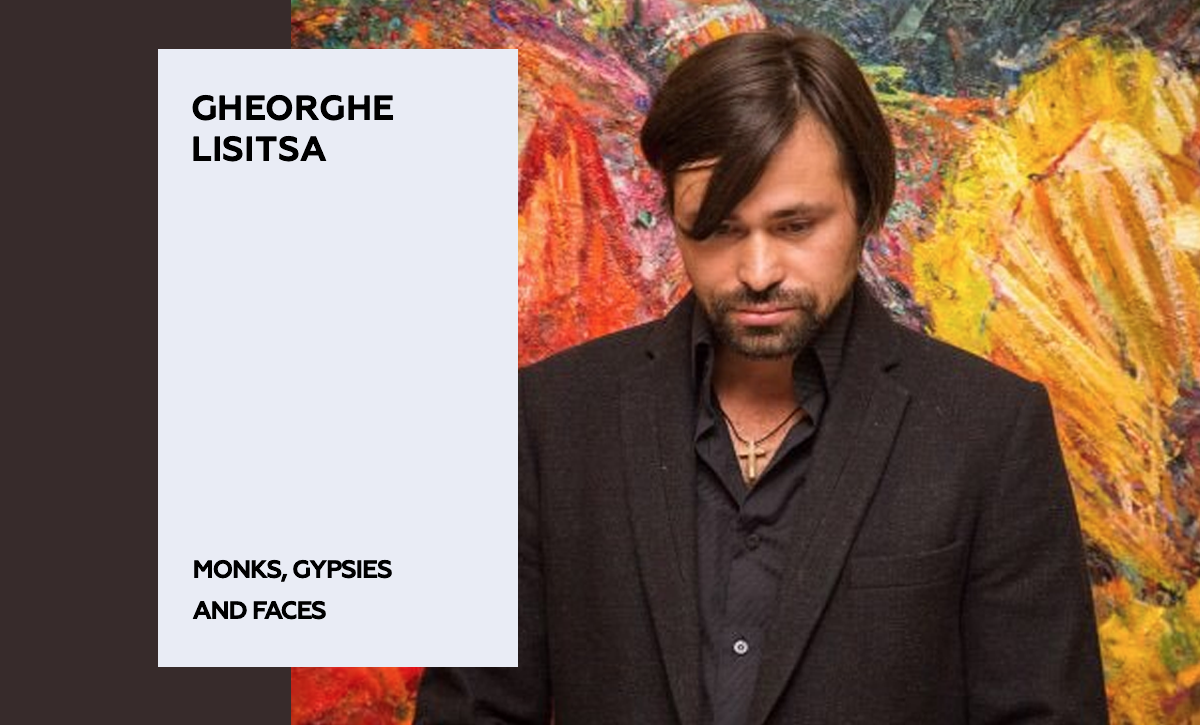
I had scheduled an interview with Gheorghe Lisitsa, but after an hour in his studio, I realized an essay would better convey my impressions of this odd encounter. Throughout our meeting, neither Gheorghe nor I spoke as much as the paintings did. I shall try to avoid emphatic expressions and temper my exaltation by describing some crude banalities.
Gheorghe was born in a tiny village and attended the College of Fine Arts "Al. Plămădeală" in Chisinau. After college, he was a disciple of Vasile Moșanu and Eleonora Bringalda. Though he belongs to the Moldovan school of painting, he is referred to as "the Moldovan Repin". Quite Difficult to dispute. The Russian school of portraiture is a particular mastery, and the artistic sensibility of Gheorghe Lisița is perfectly aligned with it. His paintings would feel at home on the walls of a classical art museum.
.jpg)
.jpg)
The workshop
His workshop is concealed into a two-room apartment, filled to the edges with paintings and gypsy scarves. So I stepped into this maze, trying to move around without getting paint all over me. A chubby tomcat hopped cheerfully in the chaos of the room. If you imagine that artists drink espresso from coffee machines, you've never visited an authentic studio. Coffee, just like a painting, is a savory process. The coffee pot must be aged, large, and slightly wrinkled. There's not much furniture in the apartment, but there's not much space either. There are only paintings. Some are finished, some are still in the middle of their path. Some have been waiting for about ten years. Not because Gheorghe is slow, but because some paintings, just like wine, need time for maturation.
.jpg)
Dissertation
Monks at the window - is the name of Gheorghe's dissertation for Creanga University. To paint it, he lived for a while in the Nicoreni monastery. The painting is still in the studio, in the category "not for sale". The studio abounds in paintings that Gheorghe will never part with. When a buyer was very insistent, Gheorghe resigned to paint a copy. Yet, a copy will remain a copy. For some, faith is limited to the surface of religious attributes; for others, faith is a mystery. It seems that George is praying to God by painting..jpg)
Gypsies
Plenty of monks and gypsies. Following scholarly standards, we would have said that this is the "leitmotif " of his work. Though, when it comes to Gheorghe, it's an eternal return to the subject. The gypsy fabrics hang on strings stretched out just like clothes hung out to dry. In his photographs, Gheorghe tries to capture the vibrancy and character of the gypsies. Then he works with the fabrics to make the folds as vivid as possible. Fabrics help him recreate the beautiful play of colors.
.jpg)
If I were to interview for EcoFloor, this would be one of the answers to the question "why do I need a new carpet?":
"A rustic dame or a gypsy from Provence? Queen of the fields or fairy of the forest? Leaves or flowers? The choice is yours. Allow yourself to be different because we can always find a carpet to match your image, lifestyle, and wildest ideas. When a rug mimics nature's motifs, both your home and office breathe differently."
I'd suggest changing small carpets a few times a year. You have no idea how much it refreshes the room.
It's spring soon. Make a change.
*Look for EcoFloor at Décor Park.
.jpg)
The Russian school of painting is magical. Watched up closely, it's a chaos of colorful brushstrokes laid down by a child playing with brushes. A step away, the brushstrokes take the shape of a reanimated face. Faces hide characters, destinies, feelings. I asked Gheorghe if he paints portraits after nature or after photographs. So and so, he replied. Paintings after photographs are commercial orders. I have the impression that Gheorghe sees the living person behind the photograph. He showed me a portrait of a Romanian woman, painted after a photograph he had sent me. The photo was flat, but the painting had depth.
.jpg)
What did I miss?
The epic canvasses. I guess the love for interviews takes its toll. Portraits interest me more than anything else. But Gheorghe doesn't just paint portraits and landscapes, which I'd take, and change them at home like views from a train window. He has great works of Decebal, Ștefan cel Mare, and the events of April 7th. These paintings are not ordered but appear out of an inherent necessity. These paintings do not only "represent" the event, but also convey the roar, the hiss, and the trepidation. Police officers beat up protesters, tear gas disperses the masses. You stare and your eyes sting.
(2).jpg)
Prices
Art is underrated in Moldova. These works must be expensive. Gheorghe told me that several buyers tried to negotiate for a few thousand, which at exhibitions in Strasbourg flies for a completely different price. If I had serious money, I would have bought several paintings by Gheorghe Lisița. I am not an art connoisseur or a professional collector, but I would buy them for myself, being sure, at the same time, that in twenty years, they will be worth more money.
The cat
Artists also have artistic cats, true art connoisseurs. I was surprised that not a single painting in the studio was scratched. The cat sharpens its claws, but the art remains sacred and untouchable even to the cat.
P.S. The author of the cat picture, and I am honored for the company, is Ms. Monica Babuc. We share admiration for Gheorghe's work.
.jpg)







